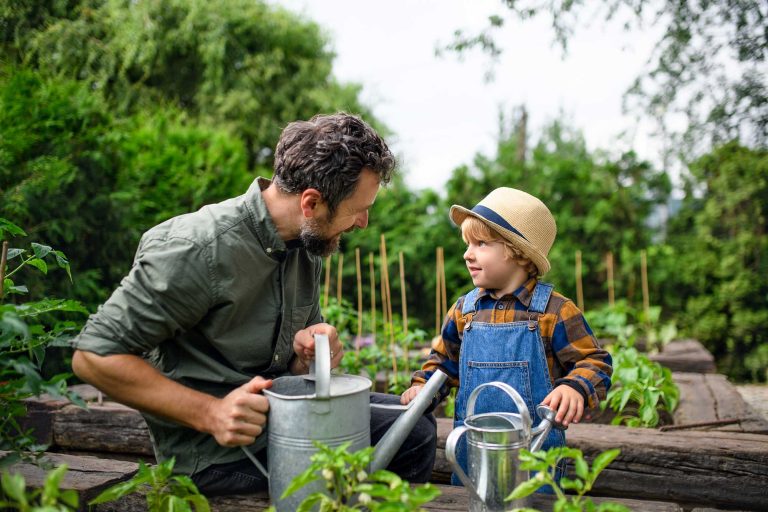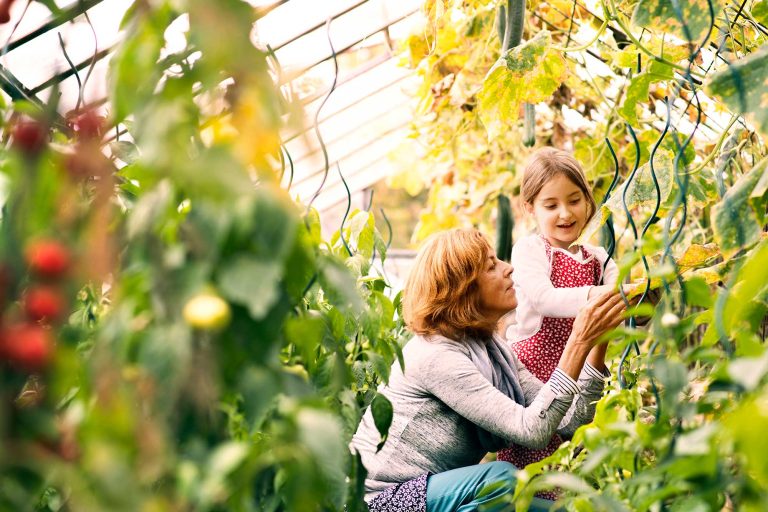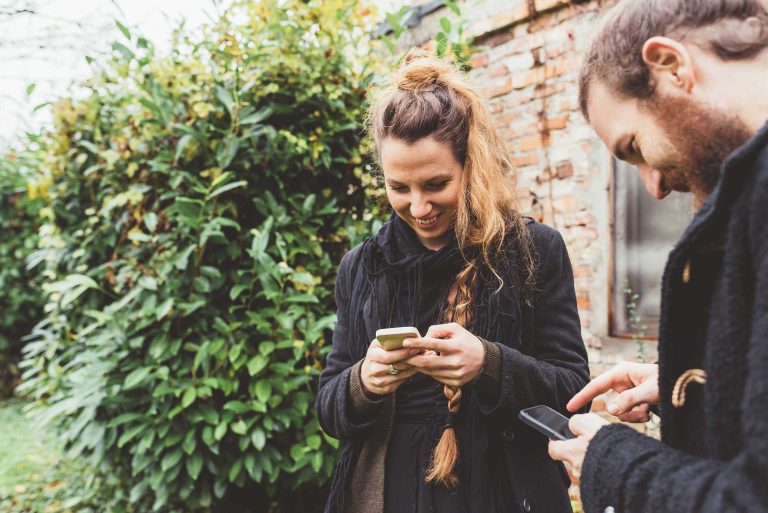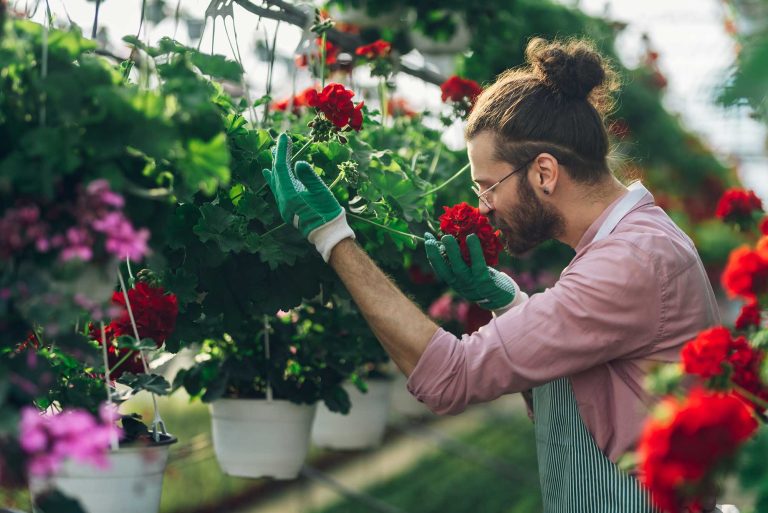Are you dreaming of a lush garden but unsure when to start your indoor plants? You’re not alone.
Many gardening enthusiasts face the same dilemma. Timing is crucial for nurturing healthy plants that will eventually thrive outside. Imagine walking into a room filled with vibrant greens and blossoms, a preview of the outdoor oasis you’ll soon enjoy. You can achieve this by knowing the right moment to begin your indoor planting.
Dive into this article and discover the secrets to kick-starting your garden journey with confidence and excitement. Let’s transform your indoor space into the starting point of a flourishing garden. Ready to unlock the potential of your plants? Keep reading!
Choosing The Right Time
Timing matters for starting indoor plants for your garden. Begin a few weeks before the last frost date. This gives plants a strong start for outdoor growth.
Choosing the Right Time Deciding when to start indoor plants for your garden can make a significant difference in their growth and success. Timing is everything, and understanding the ideal moment to begin can help you prepare for a thriving garden. Several factors come into play, including seasonal changes and climate conditions, which you’ll want to consider carefully.Seasonal Considerations
The changing seasons play a crucial role in determining the best time to start your indoor plants. Most seeds require specific temperatures and daylight hours to germinate effectively. For instance, starting seeds in late winter or early spring gives them a head start before transplanting them outside. If you’re in a region with harsh winters, starting seeds indoors can help you bypass the frost and provide a controlled environment for young plants. By the time spring arrives, your seedlings will be robust and ready to face the elements.Climate Factors
Your local climate is another important factor in deciding when to start your indoor plants. Warmer climates might allow for earlier planting, while cooler areas may require a later start. Pay attention to your region’s frost dates, as these will guide you on when it’s safe to move plants outdoors. Microclimates within your home can also affect growth. A sunny windowsill may provide the necessary warmth and light for seedlings, even in cooler months. Understanding these nuances can help you make informed decisions about planting times. Are you ready to start your indoor garden adventure? Consider these factors, and you’ll be well on your way to nurturing a flourishing garden.Selecting Suitable Indoor Plants
Starting an indoor garden is an exciting venture that can transform your living space into a lush oasis. But with countless plant varieties to choose from, selecting the right indoor plants can feel overwhelming. The key is to focus on plants that are suitable for your home’s environment and your gardening experience. Let’s explore some popular choices for beginners and the factors affecting plant selection, making it easier for you to start your indoor gardening journey.
Popular Choices For Beginners
When starting out, it’s wise to pick plants that are known for being forgiving and easy to care for. These plants can survive with minimal attention, making them perfect for new gardeners.
- Snake Plant:Known for its resilience, the snake plant can thrive in low light and needs infrequent watering.
- Pothos:This plant is versatile and can grow in various lighting conditions, making it an excellent choice for beginners.
- Spider Plant:With its air-purifying qualities, the spider plant is not only easy to care for but also beneficial for your home.
These options provide a solid foundation to build your confidence as you develop your green thumb.
Factors Affecting Plant Selection
Choosing the right plants involves more than just personal preference. Consider these factors to ensure your indoor garden thrives:
- Light Conditions:Assess the natural light available in your home. Some plants need bright, indirect light, while others can survive in low-light areas.
- Space:Evaluate the space you have. Small apartments may be better suited for compact plants, while larger rooms can accommodate bigger varieties.
- Maintenance Level:Be honest about the time you can dedicate to plant care. If you’re often busy, opt for low-maintenance plants that require less frequent attention.
Think about your environment and lifestyle. Are you ready to tend to a plant’s needs, or do you want something that largely takes care of itself?
By considering these factors, you’ll be able to select plants that not only enhance your space but also fit seamlessly into your daily routine. Happy gardening!
Preparing For Indoor Planting
Preparing for indoor planting sets the stage for a thriving garden. It involves gathering the right tools and creating a suitable environment. This ensures your plants grow strong and healthy. Starting with a solid foundation is key. Let’s explore the essentials for success.
Gathering Essential Supplies
Begin by collecting necessary items for your indoor plants. You need pots, potting soil, and seeds or seedlings. Choose pots with drainage holes to prevent waterlogging. Quality potting soil provides nutrients for growth. Ensure you have a watering can and plant labels. Labels help track plant types and care needs.
Creating Optimal Growing Conditions
Indoor plants thrive in the right environment. Find a spot with enough sunlight. A south-facing window is ideal. Adjust lighting with grow lights if sunlight is limited. Maintain a steady temperature. Most plants prefer 65-75°F. Humidity is vital for plant health. Use a humidifier or mist plants regularly.

Credit: www.plantflix.com
Planting Techniques And Tips
Indoor plants should be started several weeks before the last expected frost. This timing allows seedlings to grow strong before moving outdoors. Ensure adequate light and warmth for optimal growth indoors.
Starting indoor plants for your garden is an exciting venture that requires a blend of art and science. By understanding the planting techniques and tips, you can lay a solid foundation for your indoor garden. These techniques ensure healthy growth and a vibrant garden, ready for transplanting outdoors when the season changes.Proper Potting Methods
Choosing the right pot is crucial for the health of your plants. Opt for pots with drainage holes to prevent waterlogged soil, which can lead to root rot. When filling your pot, use a high-quality potting mix that provides adequate nutrients and proper aeration. I once learned the hard way that using garden soil can compact and suffocate the roots. Avoid that mistake! Consider the size of the pot relative to the plant. A pot that is too small will restrict growth, while a large one can lead to excess moisture retention.Watering And Maintenance
Watering indoor plants is a balancing act. Too much water can drown them, while too little can lead to dehydration. Test the soil moisture by sticking your finger about an inch into the soil; if it feels dry, it’s time to water. Develop a routine for checking your plants daily for signs of distress or pests. Early detection can save your plants from irreversible damage. Don’t forget to rotate your plants regularly. This simple act ensures even growth and prevents them from leaning toward the light source. Wouldn’t it be fascinating to see your indoor plants thrive with these simple yet effective techniques? Try it out and watch your green sanctuary flourish.Transitioning To Outdoor Garden
Consider the last frost date in your area to start indoor plants for your garden. Begin seeds indoors 6-8 weeks before this date. This ensures plants are strong and ready to thrive when moved outside.
Transitioning your indoor plants to an outdoor garden can be an exciting phase of your gardening journey. It’s a time when your nurtured plants get to experience the natural elements and potentially thrive in a more spacious environment. However, timing and preparation are key to ensuring a smooth transition. Let’s explore how you can effectively move your indoor plants outdoors.Timing The Move
Choosing the right time to move your plants outdoors is crucial. Ideally, you should wait until the last frost date has passed in your area. This can prevent your plants from being damaged by unexpected cold weather. Check local weather forecasts and consider the specific needs of your plants. Some plants may require warmer temperatures and more sunlight, while others might tolerate cooler conditions. Understanding these requirements can help you decide when to make the move. It’s also important to gradually extend the time your plants spend outside. Start by placing them outdoors for a few hours a day, then gradually increase this time over a week or two. This allows them to adjust to the new environment without shock.Acclimatization Process
The acclimatization process, also known as “hardening off,” is essential for a successful transition. This involves gradually exposing your indoor plants to outdoor conditions. Begin by placing your plants in a sheltered, shady spot. This helps them get used to the wind and fluctuating temperatures without being overwhelmed by direct sunlight. Increase their exposure to sunlight gradually. Over several days, move them to a sunnier location, ensuring they get a bit more sun each day. This gradual exposure helps prevent sunburn and stress. Monitor your plants closely during this period. Look out for signs of stress, such as wilting or yellowing leaves, and adjust their exposure accordingly. By being attentive, you can ensure your plants are comfortable and ready for their new outdoor life. Remember, patience is key. Rushing the process can lead to plant stress and poor growth. Are you ready to give your plants the best start in their new outdoor home?
Credit: savvygardening.com
Common Challenges And Solutions
Understanding when to start indoor plants can be tricky. Timing depends on climate, plant type, and growing season. Begin by researching the best planting time for your region. Consider using grow lights to extend daylight during winter months.
Starting indoor plants for your garden can be both exciting and rewarding. However, it often comes with its own set of challenges. Addressing these issues early on ensures your plants thrive and transition smoothly to outdoor life.Dealing With Pests
Indoor plants are not immune to pests. You might notice tiny invaders like aphids or spider mites. These pests can wreak havoc if left unchecked. A simple solution is to regularly check your plants for any signs of infestation. Use a magnifying glass to spot them early. If pests are detected, try using natural remedies like neem oil or insecticidal soap. These are effective and safer for indoor use. Another tip is to maintain clean surroundings. Dusty leaves can attract more pests. Regularly wipe them down with a damp cloth.Managing Growth Issues
Growth issues are common when growing indoor plants. Your plants might grow too tall too quickly or become leggy due to insufficient light. To tackle this, ensure your plants receive adequate sunlight. South-facing windows are ideal for most indoor plants. If natural light is limited, consider investing in LED grow lights. They are energy-efficient and can be adjusted according to the plant’s needs. Sometimes, plants might need a little pruning to encourage bushier growth. Don’t be afraid to trim back overgrown stems. It can make a world of difference. What challenges have you faced with your indoor plants? Share your experiences and solutions in the comments below!Expert Recommendations
Choosing the right time to start indoor plants for your garden is crucial. Begin seeds indoors six to eight weeks before the last frost. This timing ensures plants are strong enough for outdoor transplanting.
When starting indoor plants for your garden, timing is crucial. Experts suggest considering the specific needs of each plant. Some plants thrive when started indoors during late winter. Others may require an early spring start. Understanding these nuances can lead to a flourishing garden.Best Practices For Success
Begin with quality seeds or seedlings. Choose containers with good drainage. Use potting soil tailored for indoor growth. Provide adequate sunlight or artificial light. Keep the environment warm and humid. Regularly check for pests and diseases.Mistakes To Avoid
Avoid overwatering your plants. Do not use garden soil indoors; it compacts easily. Skipping fertilizer can stunt growth. Ignoring light requirements leads to weak plants. Avoid crowding seedlings; they need space to grow. Neglecting temperature needs can harm your plants.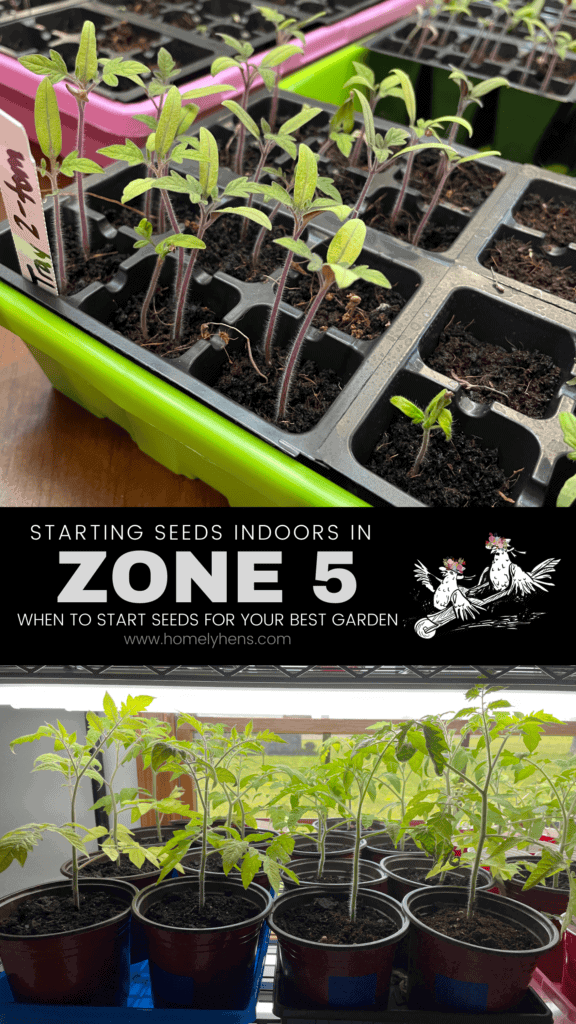
Credit: homelyhens.com
Frequently Asked Questions
When Is The Best Time To Start Indoor Plants?
The ideal time to start indoor plants is during late winter or early spring. This allows seedlings to grow strong before transplanting outdoors. Longer daylight hours and warmer temperatures help plants thrive. Preparing ahead ensures a successful transition to your garden.
How Do I Choose Indoor Plants For My Garden?
Select plants based on your garden’s climate and soil conditions. Consider light and humidity requirements. Opt for easy-to-grow varieties like herbs, tomatoes, or peppers. Research specific plant needs to ensure healthy growth indoors and outdoors.
What Are The Benefits Of Starting Plants Indoors?
Starting plants indoors gives you control over growth conditions like temperature and light. It extends the growing season, allowing for earlier blooms and harvests. This process reduces exposure to pests and diseases, ensuring healthier plants for your garden.
How Can I Care For Indoor Seedlings?
Care for indoor seedlings by providing adequate light, consistent watering, and proper ventilation. Use a high-quality potting mix and monitor temperature closely. Gradually acclimate seedlings to outdoor conditions before transplanting to minimize shock.
Conclusion
Timing matters for starting indoor plants. Early planning ensures success. Choose the right season for each plant type. Spring often works best. Watch for frost dates and adjust accordingly. Light and temperature are key factors. Indoor plants need enough sunlight.
Consider using grow lights if needed. Water them regularly but avoid overwatering. Proper care leads to healthy growth. Enjoy the process of gardening indoors. It’s a rewarding experience for plant lovers. Start your indoor garden now. Witness nature thrive within your home.
Happy planting!

